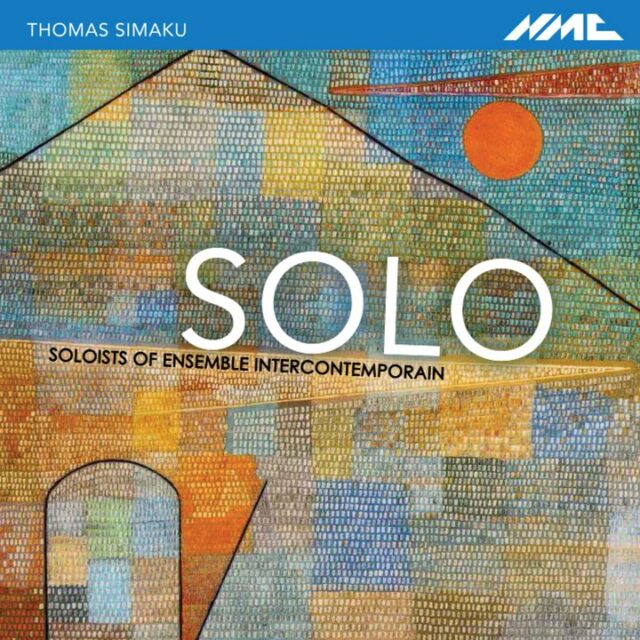Ensemble intercontemporain was founded in 1976 by Pierre Boulez; the musicians of the resident ensemble at the Philharmonie de Paris are some of the most highly-regarded soloists in the world. The opening work Soliloquy VII for clarinet and resonant piano is performed by the piece’s dedicatee – Jérôme Comte. This recording “displays the unparalleled versatility and dynamic range of his instrument; the ‘vocal’ qualities of its sound enhanced by the resonant chamber of the piano into which he plays”. Catena II is performed by pianist Dimitri Vassilakis, and represents “a journey into the spiralling colours, gestures and dynamics possible on the piano”. Percussionist Aurélien Gignoux performs Soliloquy VIII for marimba plus, in which Simaku “treat[s] the marimba as if it were an orchestra with a huge range of colours and a number of individual lines constantly interacting with one another”. In his composition Soliloquy IX for trumpet and resonant piano, Simaku makes use of “delicate muted sections, menacing pitch bending, and bell-like resonances”, conceiving the trumpet part as a “resonating canvas” brought to life by soloist Clément Saunier. The disc concludes with Catena III – Corona – Simaku’s personal reflection on the effects of the Covid-19 pandemic through the use of “tumultuous syncopated figures and gloomy, lyrical moments”.
